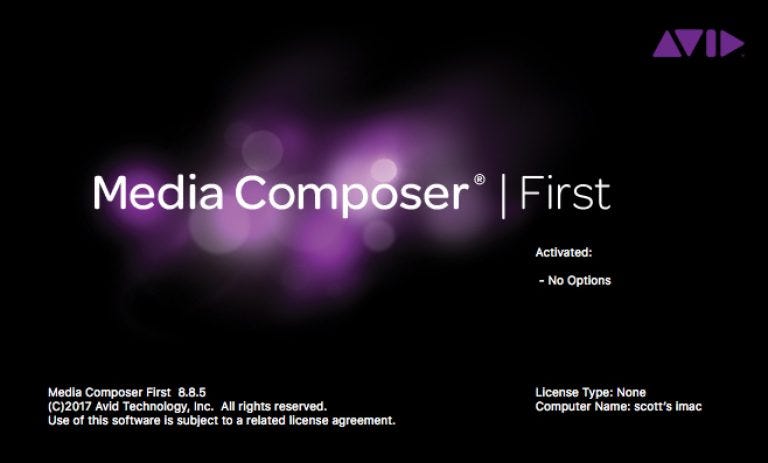

- AVID MEDIA COMPOSER REVIEW HOW TO
- AVID MEDIA COMPOSER REVIEW SOFTWARE
- AVID MEDIA COMPOSER REVIEW OFFLINE
A lot of exports fail because this box hasn’t been checked. Why? If this box is unchecked, the AAF (Advanced Authoring Format) file the editor creates may fail if the file size exceeds 2GBs, which was the old file size limit of OMF (Open Media Framework) exports. I typically want all the tracks in the sequence and by keeping this box unchecked, I get them all, as long as the lower box ‘Include All Audio Tracks in Sequence’ is selected.įor manageable file sizes and general avoidance of issues, I don’t include video in my AAF exports.ĪAF Edit Protocol has to be checked. Unless there’s a strong reason you’re only getting part of the timeline, I suggest this box always be turned off so as to include everything in the sequence. This means if I have that box checked, anything outside the in and out points set by an editor (to make a selection within the timeline) won’t be included. ‘Marks’ can be set at in and out points on a sequence. However, the basic settings are there in all versions. Most importantly, this brief article will supply you with the language needed to ask for what you need, an AAF that works!Įxporting a ‘sequence’ (known as a session in Media Composer) is typically a ‘right-click’ affair whilst selecting the sequence.Īt some point, a window like this appears, though it can look a little different in various versions/skins of Media Composer. I demoed the most recent version of Media Composer in December so I can say with certainty that this workflow is viable. Even though the user interface on the more recent Media Composer incarnations has changed, all the actual export functions and Export Settings window are pretty much the same. Today, armed with my old trusty screengrab, I’ll break down my typical AAF Export processes.
AVID MEDIA COMPOSER REVIEW HOW TO
How To Export A Pro Tools Friendly AAF From Media Composer This document was used throughout the Canadian national broadcaster and set the template for getting into and out of all the various workstations and servers, to create a cohesive file-based workflow. I came away from that experience with enough knowledge to help co-author the CBC’s Workflow Best Practices Manual.
AVID MEDIA COMPOSER REVIEW SOFTWARE
I can tell you from experience, recording, editing and mixing in Media Composer is NOT a lot like Pro Tools but at least we were all working from the same ISIS servers, using the Interplay software as our portal to each other. Video Editors are frame-based editors their systems are performing much more complex calculations than ours they each have different operational skill levels and ways of working. I had not, however, used Media Composer prior to the run-up to the Games.Ī month of operating Avid’s Media Composer gave me more insight into the editorial process than all the prior years of dealing with editors. We’d all be working on Media Composer, including me, an audio post-production operator who was seconded due to my comfort level with nonlinear editing stations.
AVID MEDIA COMPOSER REVIEW OFFLINE
This meant, rather than ship machines and personnel en masse to Italy for CBC’s broadcast coverage, the offline technicians would instead be situated on the tenth floor of the Toronto broadcast centre. The Canadian Broadcasting Corporation had decided that the production for the 2006 Winter Olympics in Torino, Italy was to be a file-based workflow. Backgroundīack in early 2006, I was given a gift that has kept on giving to this day: I was trained for 3 days on AVID Media Composer.

If you have ever had issues with AAFs from video editors, then you will want to share this with them. In this article post-production specialist Damian Kearns shared his advice on the best way to export a Pro Tools friendly AAF from Avid Media Composer.


 0 kommentar(er)
0 kommentar(er)
